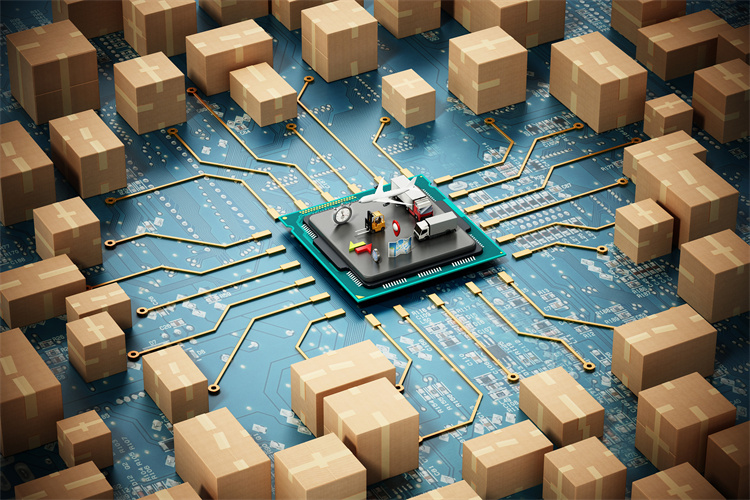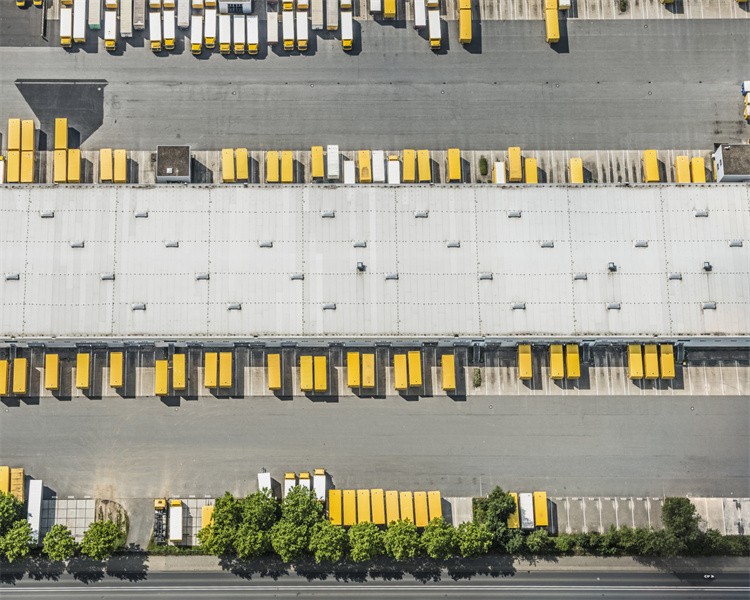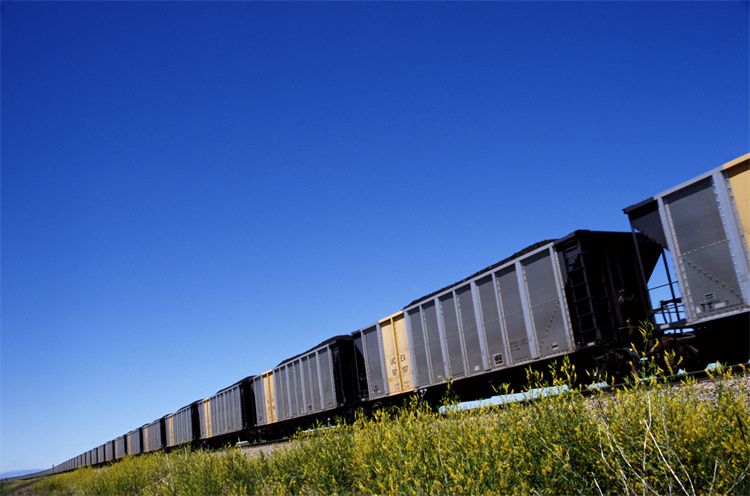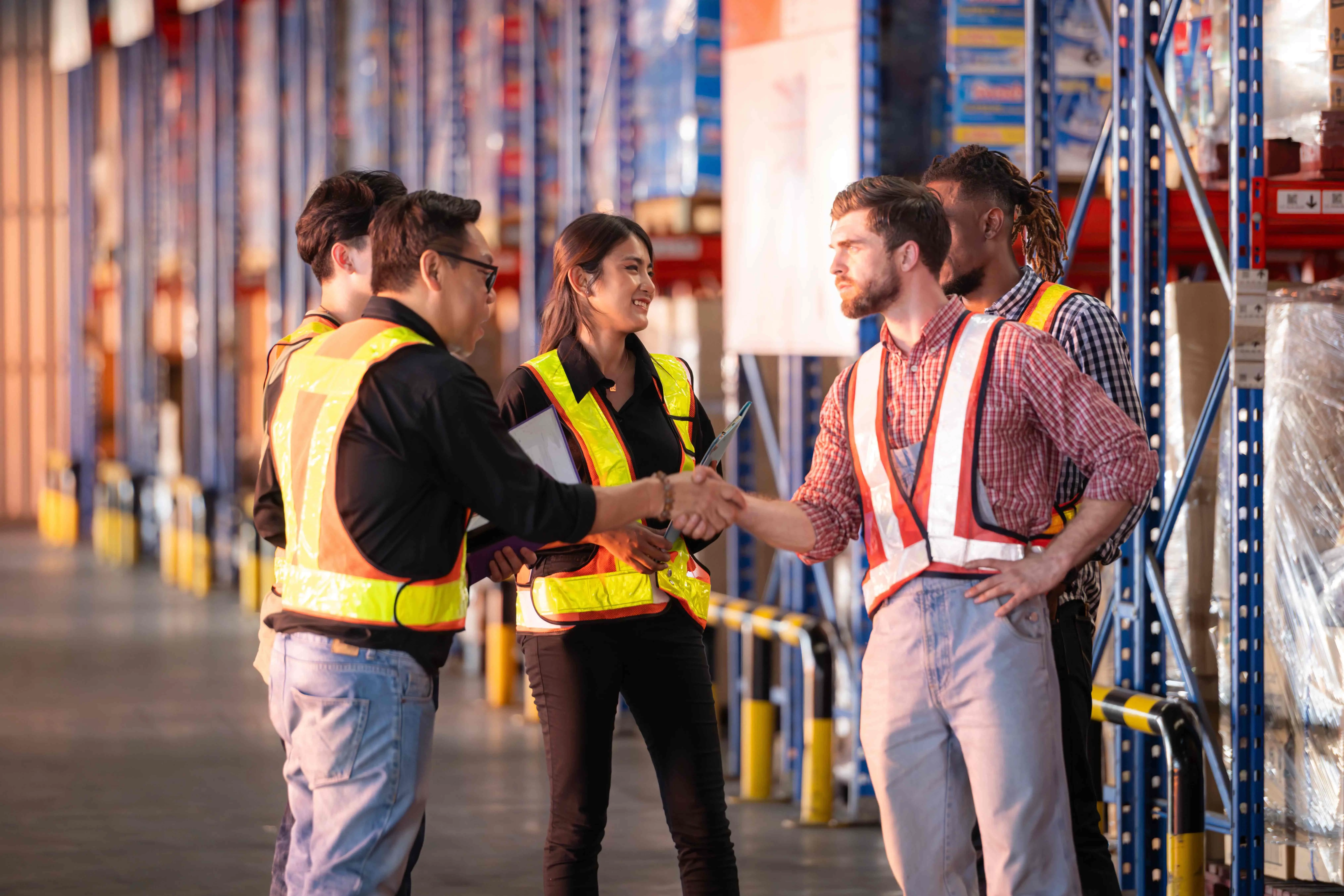The Next Wave of Smart Logistics: Key Technologies and Trends

Smart logistics in 2025 depends on new ideas and better technology. Companies use automation, artificial intelligence, IoT, and blockchain to work faster and help the planet. These trends help people see what is happening right now and make better choices. Using new logistics technology helps businesses stay in front. Smart logistics changes how supply chains will work in the future.
Key Takeaways
Smart logistics uses AI, IoT, automation, and blockchain to help supply chains. These tools make things move faster, safer, and work better.
Real-time data and digital tools let companies see problems early. They help manage risks and make deliveries more accurate.
Green logistics and new ways to deliver cut down on pollution. They also save money and help meet what customers want.
AI in Smart Logistics
Artificial intelligence is making logistics smarter and more dependable. Companies use AI to look at data, guess what will happen, and do simple jobs automatically. JUSDA’s JusLink AI Solution is a good example. It gives trend analysis, demand forecasting, a risk control tower, and JusElsa, which is a smart supply chain helper.
Predictive Analytics
AI predictive analytics help companies see what might happen next. JusLink uses data to guess demand, manage inventory, and plan when to restock. Big companies like Amazon and Walmart use these models to keep enough stock and get products faster. DHL and Western Digital use similar tools to stop problems and deliver on time.
Predictive analytics can lower stockouts by 15% and cut downtime by 25%. Good demand forecasting helps companies waste less and meet customer needs.
Automation
Automation with AI helps people work faster and make fewer mistakes. JUSDA uses automation for planning routes, managing warehouses, and working with suppliers.
Amazon uses robots to pick orders faster and make fewer mistakes.
Automation in logistics can cut costs by 15% and reduce manual work by 30%.
Company | Impact | |
|---|---|---|
Autonomous Mobile Robots (AMRs) | Amazon | Faster order picking, fewer mistakes |
RFID Implementation | UPS | 50% fewer loading errors, less manual work |
Robotics | DHL | 60% more productivity |
Risk Management
AI tools help logistics companies find risks early and act quickly. JusLink’s risk control tower watches data all the time and sends alerts for weather, supply delays, or world events.
AI models show what could go wrong and give backup plans.
Walmart and JD.com use AI to guess demand and check for risks, making their supply chains stronger.
AI risk management helps companies act before problems happen, saving money and keeping supply chains safe.
Logistics Innovations with IoT
IoT is helping companies change how they manage supply chains. JUSDA’s JusLink platform uses IoT, cloud computing, and big data. These tools connect every part of the logistics process. They help companies see what is happening right now. Companies can share data and work together better.
Real-Time Tracking
IoT sensors and GPS trackers give live updates on shipments and vehicles. Companies like FedEx and DHL use these tools to track goods. They also watch conditions during delivery. Real-time monitoring helps find problems early. It keeps deliveries on time. JusLink’s platform uses IoT to give live data. Managers can make fast choices and improve how things move.
Innovation / Technology | Application in Logistics | Impact on Supply Chain Visibility and Efficiency |
|---|---|---|
IoT Sensors & GPS Trackers | Real-time shipment tracking, vehicle and driver monitoring | Enables live updates on location, condition, and status of goods |
AI-powered Route Optimization | Dynamic traffic management, route planning | Optimizes delivery speed and accuracy, reduces delays |
5G Connectivity | High-speed data transmission | Supports real-time data flow and edge computing for faster decisions |
Connected Warehousing
Connected warehousing uses IoT to track inventory with RFID tags. Smart sensors help companies know where goods are at all times. Autonomous robots use IoT to move items and help workers pick orders. This technology lowers mistakes and saves money. JusLink connects warehouses to the supply chain. This keeps data moving and inventory correct.
Note: IoT-enabled warehouses use live data to plan work, protect goods, and keep things running well.
Data Integration
Bringing together data from many IoT devices gives a full view of the supply chain. Sharing real-time data helps partners work together. They can react quickly to changes in demand. JusLink’s platform gathers data from sensors, vehicles, and warehouses. This helps with predictive maintenance and inventory planning. It also helps companies make quick choices. Companies can use this technology to cut downtime and avoid running out of stock. It also helps keep customers happy.
Key Benefit | Description | Case Study Example |
|---|---|---|
Continuous monitoring of shipments, inventory, and asset conditions for immediate awareness. | Pharmaceutical cold chain monitoring with temperature sensors ensuring compliance and product integrity. | |
Inventory Optimization | Automates stock management to reduce errors, overstocking, and stockouts. | Warehouse automation in retail, improving inventory accuracy and streamlining order fulfillment. |
Logistics innovations with IoT help companies meet demand. They let companies share data right away. They use technology to make the supply chain stronger.
Automation and Robotics

Automation and robotics are making logistics easier for companies. JUSDA uses smart warehousing, K2L process automation, and robotics to help work go faster. These tools let companies handle more orders and make fewer mistakes. They also help save money.
Warehouse Automation
Warehouse automation uses machines and software to move and store products. JUSDA’s smart warehousing system links robots, sensors, and data platforms together. This helps workers find items quickly and keeps inventory correct. Many companies use automated storage, conveyor belts, and pick-and-place robots. These tools help pick items faster and make fewer errors. A new warehouse system can save a lot of money each month. It protects inventory and helps manage worker costs. Most companies get their money back in a year. Warehouse automation also helps companies grow bigger.
Technology | Description | Documented Results |
|---|---|---|
Computer-controlled storage and picking | Higher accuracy, space savings | |
Conveyor Systems | Automated product movement | Better flow, higher throughput |
Pick-and-Place Robots | Robots for sorting and picking | Faster order fulfillment, fewer mistakes |
Real-Time Tracking Systems | GPS, RFID, IoT for monitoring | Improved visibility, better decisions |
Autonomous Transport
Autonomous transport uses self-driving trucks, drones, and guided vehicles. JUSDA uses these to deliver products fast and safely. Self-driving trucks can work all day and night. This helps when there are not enough drivers. Drones deliver small packages and check inventory in hard places. These tools lower costs and help the environment. They also make deliveries more accurate. Companies use AI and sensors to plan the best routes. They track vehicles live. Autonomous transport makes deliveries faster and more reliable.
Process Optimization
Process optimization means using robotics and smart systems to improve every step. JUSDA’s K2L process automation makes order handling, packing, and shipping easier. Robotic arms sort packages and pick items. This helps move more packages and need fewer workers. Companies use robotics-as-a-service to add automation without spending a lot at first. Connecting robotics with packaging and storage helps companies change when demand goes up or down. These ideas make logistics more flexible and efficient.
Companies that use automation and robotics work faster and make fewer mistakes. Customers are happier. Automation in logistics is important for future growth and success.
Blockchain and Security
Transparency
Blockchain helps everyone see what is happening in logistics. It makes a digital record that shows every product move right away. This record cannot be changed, so all partners can trust it. Companies can check where products are at any time. This is important for food safety and when products need to be recalled. Blockchain keeps records safe and easy to see, so it is simple to find problems or cheating. Smart contracts use computers to handle payments and shipping. This means there are fewer mistakes. Blockchain helps prove if a product is real. This is very important for medicine and expensive items. It also saves money by cutting out middlemen. It helps fix problems faster when there are delays.
Data Security
Logistics companies have many problems with keeping data safe. Blockchain helps protect digital information from hackers. It uses special checks to make sure people are who they say they are. This lowers the chance of someone stealing an identity. Blockchain keeps transaction data safe and stops cheating. It also protects IoT devices from people who should not get in. Data is stored in many places, so big hacks are hard. Special codes in blockchain keep data safe and make cybersecurity better.
How Blockchain Addresses These Challenges | |
|---|---|
Data fragmentation and risk of unauthorized changes | Decentralized, unchangeable ledger secures records across nodes |
Counterfeits, fraud, and data tampering | Immutability and transparency reduce these risks |
Lack of real-time data sharing | Enables accurate, real-time data and visibility |
Complex data management | Smart contracts automate and reduce duplication |
Cybersecurity threats | Cryptographic security protects data integrity |
Compliance
Blockchain helps companies follow strict rules. It supports rules like ISO and FDA by making it easier to track products. Companies use blockchain to make records that cannot be changed. This makes checking records easy. Real-time tracking helps follow rules about product safety. Using automation and IoT together lowers mistakes and saves money. Blockchain stops cheating and fake products. This helps companies follow the law and keep customers safe.
Blockchain gives logistics companies ways to keep data safe, follow rules, and build trust with others.
Digital Twins
Digital twins are a strong tool in smart logistics. They make a virtual copy of real supply chains. These copies use live data from sensors and systems. The digital models show the state of trucks, warehouses, and shipments. This helps companies watch and improve their work.
Simulation
Simulation with digital twins lets teams try ideas before real changes. They use data from IoT devices and business systems in the digital twin. This shows how changes might affect deliveries or warehouse flow. For example, a company can test where to put a warehouse or plan for busy times.
Digital twins use live data to make truck routes better, like Waste Management’s route planner.
They help change warehouse tasks by matching truck arrival times with inventory needs.
Simulation with blockchain can keep data safe and check it, making planning more trustworthy.
A review shows digital twins help with watching, guessing, and improving. They need strong systems to handle lots of data.
Scenario Planning
Scenario planning with digital twins helps companies get ready for problems. These tools use sensor data and analytics to make virtual labs for “what-if” tests.
Companies can test what happens if a supplier stops or demand jumps.
They can try changes in the supply chain without real risk.
Digital twins study data to save money and speed up responses.
Teams add new data to digital twins to keep risk plans strong.
This way, logistics companies see more and can handle problems fast. They keep supply chains working well and on time.
Sustainability Trends
Green Logistics
Green logistics tries to help the environment. Companies use electric and hybrid vehicles to cut pollution. They also use fuels like hydrogen and biofuels. Route optimization software helps save fuel and lower emissions. Many companies pick packaging that can be recycled or composted. They set up recycling systems in their warehouses. Some use solar or wind power to run their buildings.
Using eco-friendly vehicles lowers pollution.
Planning routes saves fuel and time.
Green packaging and recycling keep trash out of landfills.
Renewable energy means less fossil fuel is used.
More companies now spend money on green logistics. For example, NOTS Logistics uses electric forklifts and energy-saving systems. They work with others to reuse and recycle materials. These steps help cut pollution and keep the planet clean.
Energy Efficiency
Energy efficiency is important for green logistics. Companies use data analytics to watch fuel use and plan better routes. They pick vehicles that use less energy. Predictive maintenance uses sensors to fix trucks before they break. This saves energy and lowers pollution. Many companies use software to balance loads and stop empty trips.
Focus Area | Data Use | Benefit |
|---|---|---|
Route Optimization | Real-time traffic data | Lower emissions, faster trips |
Fleet Management | Vehicle performance | Less fuel, higher efficiency |
Load Balancing | Weight and volume data | Fewer empty miles, less waste |
A worldwide study showed better logistics helps the environment. Companies that use green logistics save money and pollute less. These actions help meet customer needs for cleaner shipping.
Last-Mile Delivery

Urban Solutions
Cities make last-mile delivery hard for companies. There is lots of traffic and not much parking. City streets are confusing and crowded. New ideas help fix these problems:
AI-powered route optimization looks at traffic to stop delays.
Real-time tracking systems show where packages are and spot slow spots.
Micro-fulfillment centers in cities make trips shorter and faster.
Crowd-sourced delivery uses gig workers when it gets busy.
Electric vehicles and bike couriers help cut pollution.
Drones bring small packages fast in busy places.
Big companies like Amazon and UPS use robots and green fuels. They also work with others to make city delivery better. These ideas make last-mile delivery quicker and more dependable. They also help the environment. The market for self-driving last-mile delivery is getting bigger. New startups and patents are making things change fast.
Customer Experience
Customer experience is very important for last-mile delivery. Companies use technology to meet what customers want. Real-time tracking lets customers see their packages and worry less. AI helps companies get ready for busy times and stop delays. Route optimization and telematics make deliveries faster and more reliable.
Flexible delivery models use gig workers and different vehicles. This helps companies grow fast when needed. Blockchain keeps packages safe and secure. Companies check how well they do with things like on-time delivery, first-try success, cost per delivery, and customer happiness.
Metric | What It Measures |
|---|---|
On-time delivery rate | Percentage of packages on schedule |
First-attempt success | Deliveries completed on first try |
Customer satisfaction | Feedback and Net Promoter Score |
Cost per delivery | Average expense per package |
Companies keep checking and listening to customers. This helps them get better and keep people coming back.
Data Management
Analytics
Data analytics helps companies use information to make better choices. They use special tools to watch every part of their work. For example, ANOVA lets teams compare how long orders take and how much fuel is used. It also helps check delivery routes. This way, companies can see real results. They might cut warehouse time by 15%. They could save 10% on fuel for their trucks. Data analytics also helps with inventory, packaging, and checking quality. IoT devices send live data so teams can watch things all the time. They can fix problems fast. Dashboards and KPIs help teams see how they are doing and find issues early. Using data analytics makes logistics technology work better and more smoothly.
Note: Good data management means checking data often, teaching workers, and using AI to guess what might happen. These steps help companies make smart choices and react fast when things change.
Integration
Integration links data from many systems to make logistics stronger. Companies bring together data from TMS, WMS, and ERP. They use the same formats and codes, like HS codes and ISO standards. This helps stop mistakes and makes work faster. When data is joined, teams can see what is happening right away. They can get answers quickly. Teams can also use automation to do jobs and watch live KPIs. This makes it easy to grow and work with partners. Companies can react to market changes faster. When data is integrated well, companies trust their plans and do better overall.
Overcoming Challenges
Talent Gaps
Many logistics companies do not have enough skilled workers. New technology like AI and robotics needs special skills. Companies need to train workers to fill this gap. JUSDA has training programs for digital transformation. These programs show workers how to use new tools. Companies also work with schools and training centers. This helps them find new workers and keep up with changes.
Cybersecurity
Cybersecurity is a big worry in smart logistics. Companies keep lots of data online. Hackers try to steal this data or cause problems. JUSDA uses strong security to protect its systems. They use advanced encryption and check systems often. Companies should make clear rules for who can see data. They must teach staff to spot threats. Regular updates and drills help keep systems safe.
Change Management
Change is hard for many companies. Digital transformation brings new ways to work. Some workers may not like these changes. JUSDA uses a digital roadmap to help teams step by step. Leaders talk about the benefits and set clear goals. Open talks help everyone know why change is needed. Working with tech experts helps make changes easier. Companies that plan well can adapt fast and stay ahead.

JUSDA Solutions
To provide you with professional solutions and quotations.
Smart logistics will change how supply chains work. Companies such as JUSDA use new technology and ai. These tools help teams finish jobs faster and better. Leaders need to try digital tools and think ahead. Using these changes helps companies win as logistics keeps changing.
See Also
Innovations Driving The Future Of Logistics Technology
How Artificial Intelligence Is Transforming Supply Chains
Digital Solutions Paving The Way For Future Logistics
